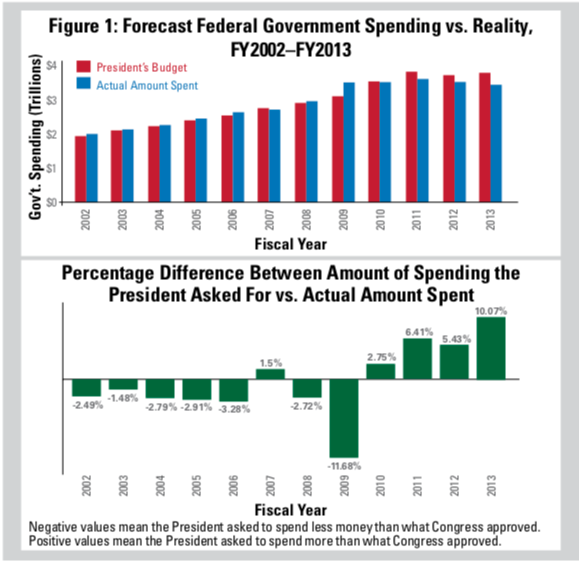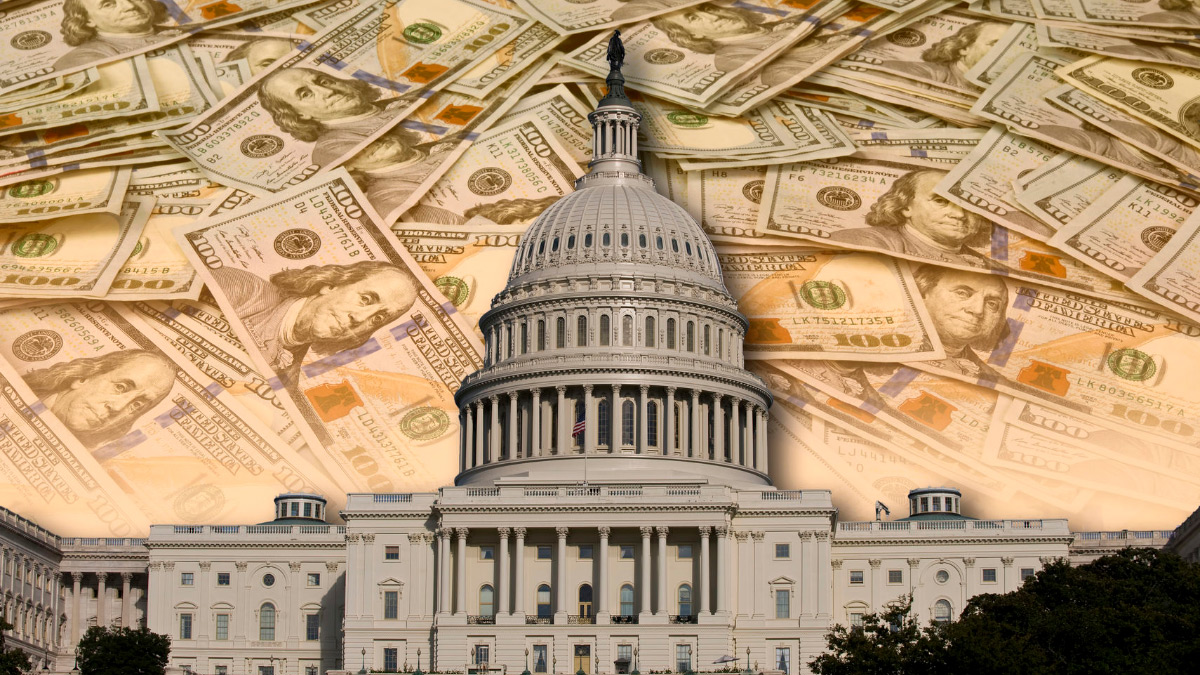Now that Barack Obama has begun his sixth year in the Oval Office, we thought it might be interesting to see how he’s changed his view of the desirable level of federal spending since he became president.
Figure 1 reveals how presidential proposals for federal spending have stacked up against reality for each budget proposed by President Bush or President Obama for every fiscal year from 2004 through 2014.
During President Bush’s tenure, we find that federal expenditures (the blue bars) often exceeded the president’s proposed spending (the red bars) by $60 billion to $90 billion. This is largely because Congress added spending on top of the amounts proposed by the White House. And yet, compared to the Obama years, Congress largely agreed with the spending levels proposed by the president.

By contrast, President Obama’s spending proposals have always stood apart from the general consensus for the appropriate level of federal expenditures. We can observe this disconnect in the vertical separation between President Obama’s desired level of spending and the actual amount of spending during his time in office. Politically, we can see how out of step President Obama’s spending desires have been by looking at the consistently large margins by which his budget proposals have been rejected in Congress.
But that gap appears to have changed somewhat with his most recent budget proposal for Fiscal Year 2014, the first following his re-election. President Obama appears to have finally begun to curb his ambition for higher spending to fund his political initiatives, although the amount of federal spending appears to be anywhere from $100 to $200 billion more per year than what the U.S. government would have spent under an extended projection of President Bush’s FY2007 budget proposal.
To be sure, that’s progress toward a more financially sound budget, one whose priorities are more in tune with those of the American people. But there is still much need and room left for President Obama to continue his evolution in the direction of fiscal prudence.
Although the president’s FY2014 budget proposal is anywhere from $100 billion to $300 billion less than what President Obama proposed for the federal government to spend in any of his first-term
budgets, it still runs at least $475 billion above the president’s historically non-credible forecasts for the federal government’s revenue collections.
That’s an important factor to consider because that difference can be made up only with more government borrowing and/or higher taxes. Both have increased substantially during President Obama’s tenure in office.
After adjusting for inflation, President Obama has imposed on households an annual debt burden nearly three times as large as the burden left by his greatest recent rival in the debt-per-household contest, George H. W. Bush.
During his first run for the Oval Office, Barack Obama promised “change.” But what he seems to have wrought is more—much more—of the same.








